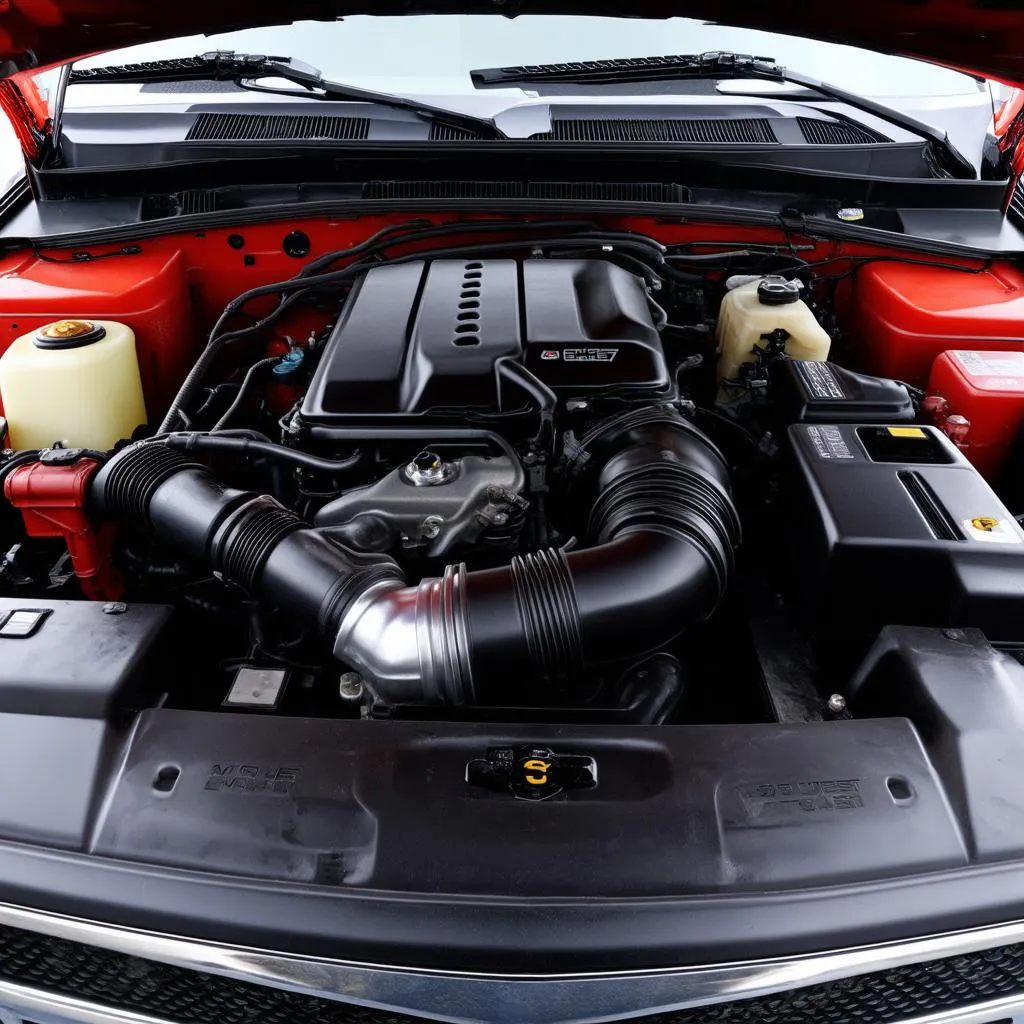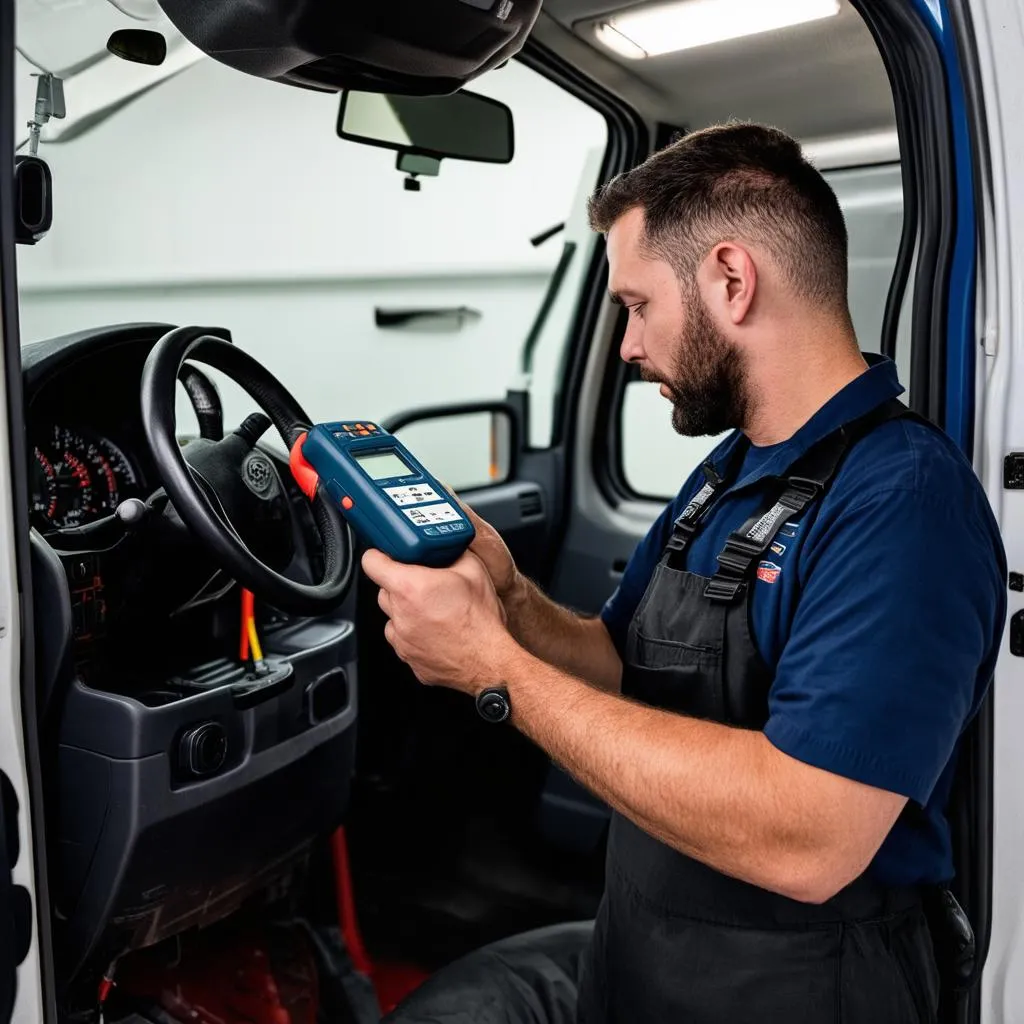“My check engine light just came on, and the code reader says P0161. What does it mean?”
Sound familiar? As a seasoned mechanic specializing in Chevy Express vans, I’ve heard this question countless times, particularly from owners of the popular 2500 model. Let’s demystify this OBD code and get you back on the road with confidence.
Unraveling the P0161 Code: What’s Going On?
In a nutshell, the P0161 code indicates a problem with your oxygen sensor (O2 sensor). Specifically, it points to the heater circuit of the downstream O2 sensor in Bank 2. “Downstream” means it’s located after the catalytic converter, and “Bank 2” refers to the side of the engine that doesn’t have cylinder #1.
Think of your O2 sensors as the lungs of your Chevy Express. They constantly monitor the exhaust gases to ensure the correct air-to-fuel ratio for optimal performance and fuel efficiency. The heater circuit plays a crucial role in helping the sensor reach its operating temperature quickly, ensuring accurate readings right from the get-go.
Why Should You Care About a Faulty O2 Sensor?
Ignoring a P0161 code is like ignoring a cough that won’t quit. It might seem minor at first, but it can lead to bigger problems down the road. Here’s why:
- Poor Fuel Economy: A malfunctioning O2 sensor can disrupt the air-fuel mixture, leading to reduced fuel efficiency and more frequent trips to the gas station.
- Engine Performance Issues: A rich or lean fuel mixture can cause rough idling, hesitation, and even stalling, affecting your van’s overall performance.
- Catalytic Converter Damage: A faulty O2 sensor can eventually lead to a clogged catalytic converter, a costly repair that can be avoided with timely action.
Common Causes and Solutions for P0161
While a faulty O2 sensor is often the culprit, other factors can trigger the P0161 code. Let’s explore some common causes:
- Blown O2 Sensor Fuse: A blown fuse in the O2 sensor heater circuit can disrupt power flow, triggering the code.
- Wiring Issues: Damaged, corroded, or loose wiring in the sensor circuit can lead to communication problems.
- Exhaust Leaks: Leaks in the exhaust system before the downstream O2 sensor can throw off its readings.
- Faulty Engine Control Module (ECM): In rare cases, a problem with the ECM itself can cause the P0161 code.
What to Do Next: Your Action Plan
- Check the O2 Sensor Fuse: Locate the fuse box and consult your owner’s manual for the correct fuse. Replace it if blown.
- Inspect the Wiring: Carefully examine the wiring harness connected to the O2 sensor for any signs of damage, corrosion, or looseness.
- Look for Exhaust Leaks: Visually inspect the exhaust system, especially the area around the downstream O2 sensor, for any leaks.
- Consult a Qualified Mechanic: If you’re uncomfortable diagnosing the issue yourself, it’s always best to consult a qualified mechanic specializing in Chevy Express vans. They have the expertise and tools to accurately diagnose and repair the problem.
 Chevy Express 2500 Engine
Chevy Express 2500 Engine
Beyond the Technical: A Holistic Perspective
Interestingly, the P0161 code can also be viewed through a symbolic lens. In many cultures, cars are seen as an extension of ourselves, representing our journey through life. The engine, often considered the heart of the vehicle, symbolizes our drive and ambition.
The O2 sensor, with its role in maintaining balance and efficiency, can be seen as a representation of harmony and flow. A faulty sensor, therefore, could indicate a need to restore balance in our lives, to address any blockages that are hindering our progress.
 Mechanic Working on Chevy Express Van
Mechanic Working on Chevy Express Van
FAQs About P0161: Your Questions Answered
Q: Can I drive my Chevy Express 2500 with a P0161 code?
A: While you might be able to drive for a short distance, it’s not recommended. Driving with a faulty O2 sensor can lead to further damage and costly repairs down the line.
Q: How much does it cost to fix a P0161 code?
A: The cost varies depending on the underlying cause and labor rates. A simple fuse replacement can be inexpensive, while replacing the O2 sensor or repairing wiring issues can be more expensive.
Q: How often should I replace my O2 sensors?
A: O2 sensors typically last between 60,000 to 90,000 miles, but it’s always a good idea to consult your owner’s manual for recommended maintenance intervals.
Q: Can using the wrong type of fuel cause a P0161 code?
A: While using the wrong fuel is unlikely to directly cause a P0161 code, it can damage the O2 sensors and other engine components over time. Always use the fuel grade recommended in your owner’s manual.
Need Expert Assistance? We’re Here to Help!
Diagnosing and repairing car problems can be daunting, but you don’t have to face them alone. If you’re experiencing the P0161 code or any other automotive issues, our team of expert mechanics is here to help. We specialize in Chevy Express vans and are equipped with the latest diagnostic tools to get your vehicle back on the road quickly and safely.
Contact us today via WhatsApp at +84767531508 for a consultation or to schedule an appointment. Don’t let a check engine light ruin your day—let us take care of it!